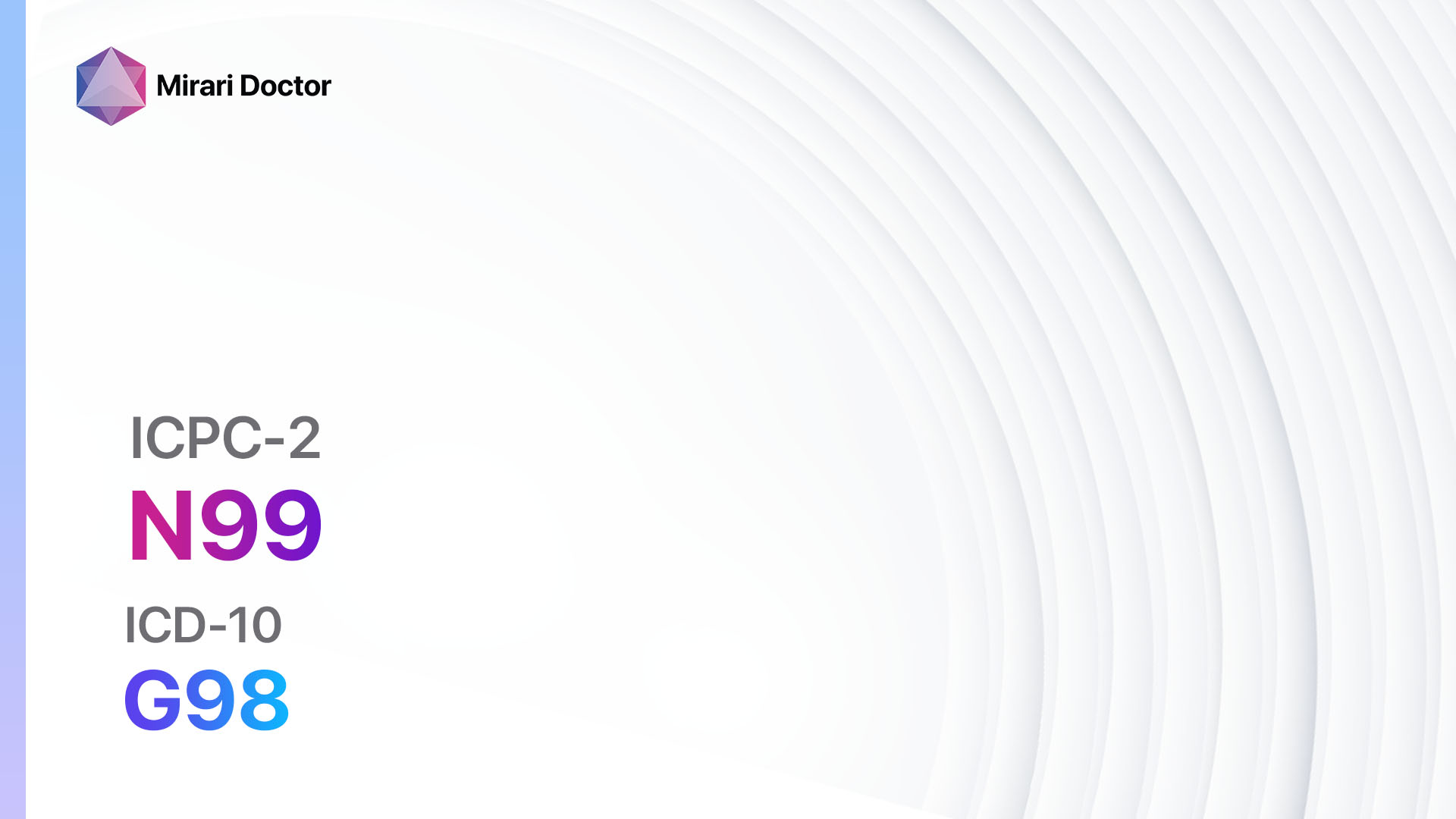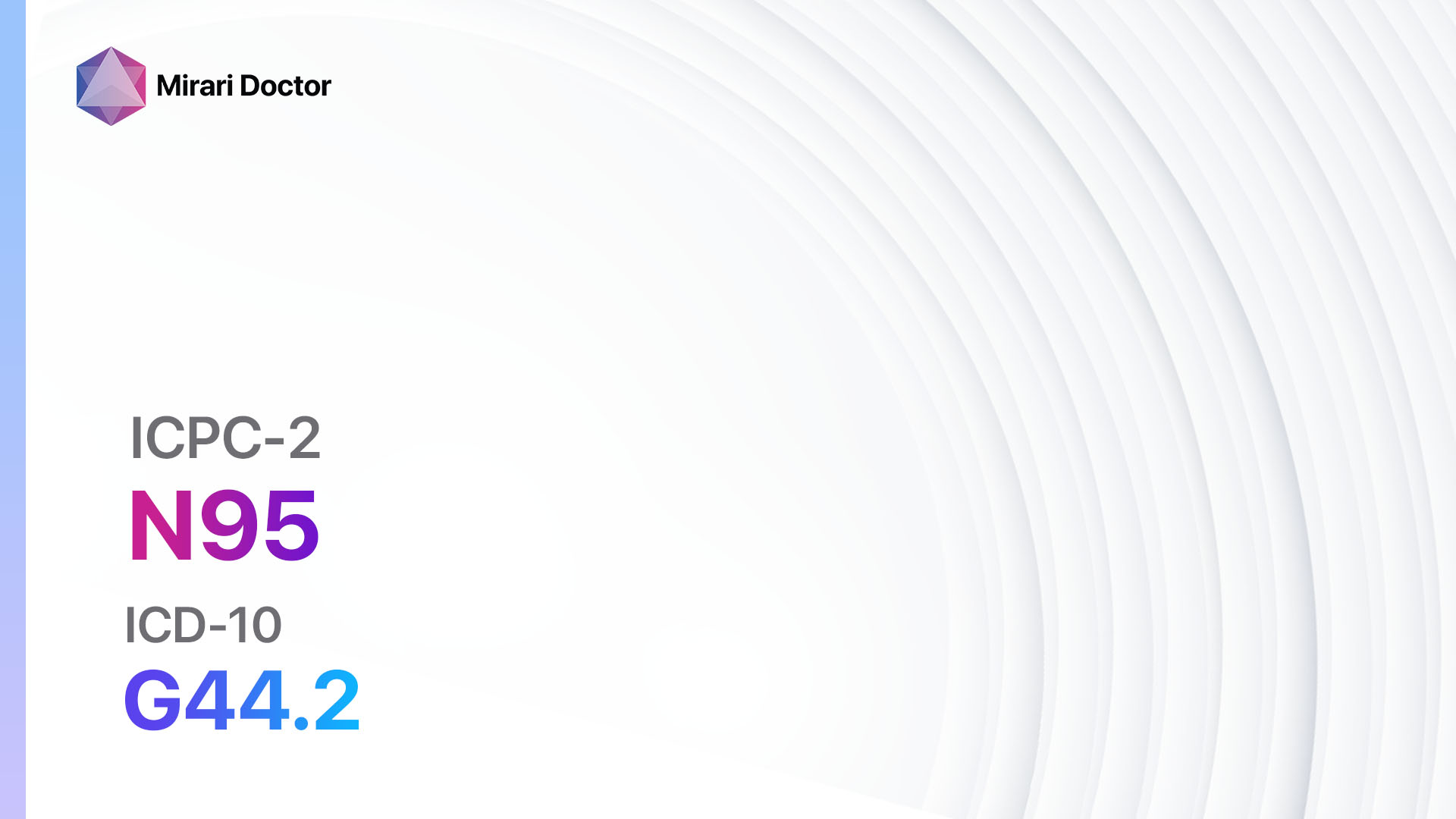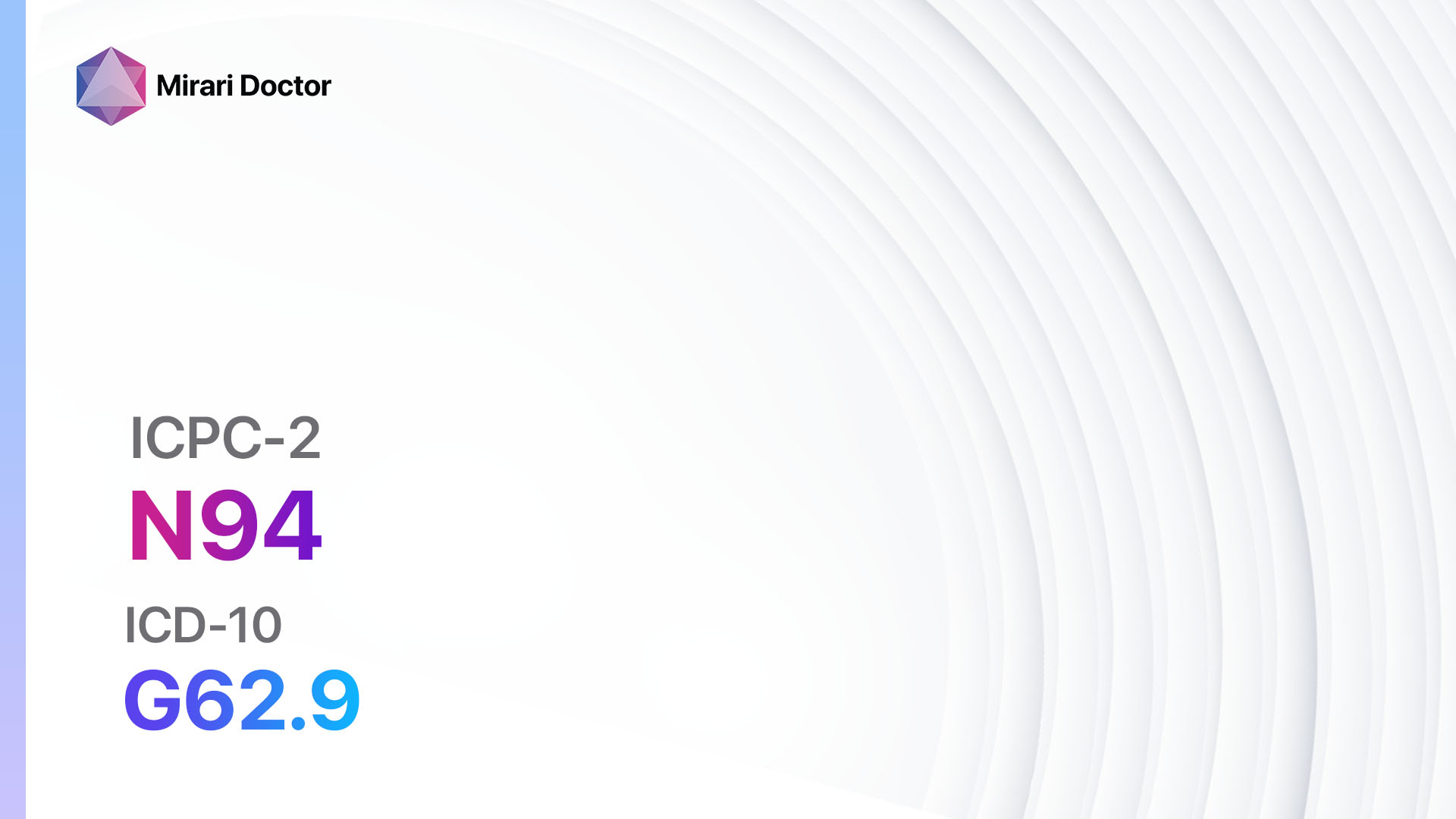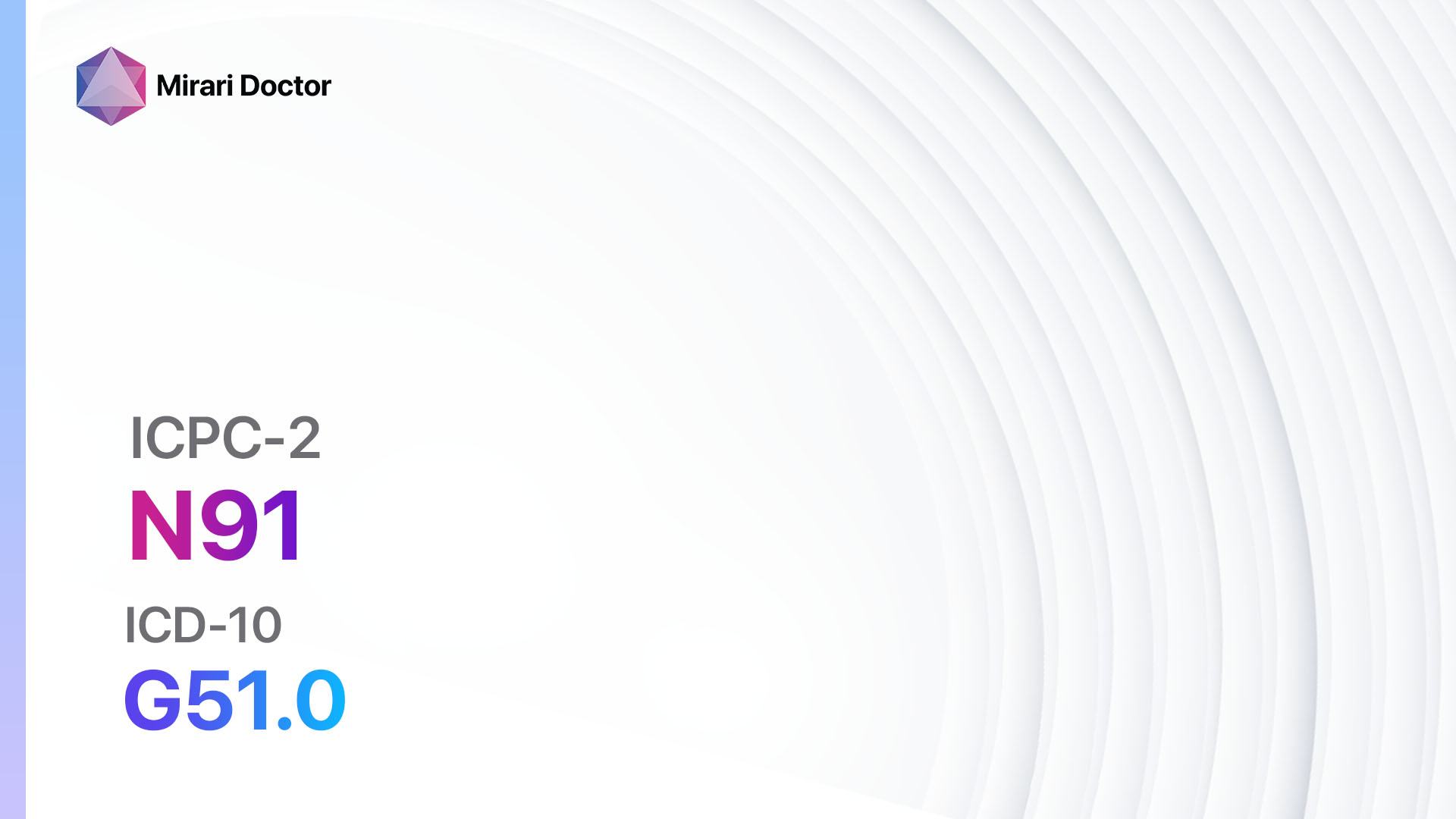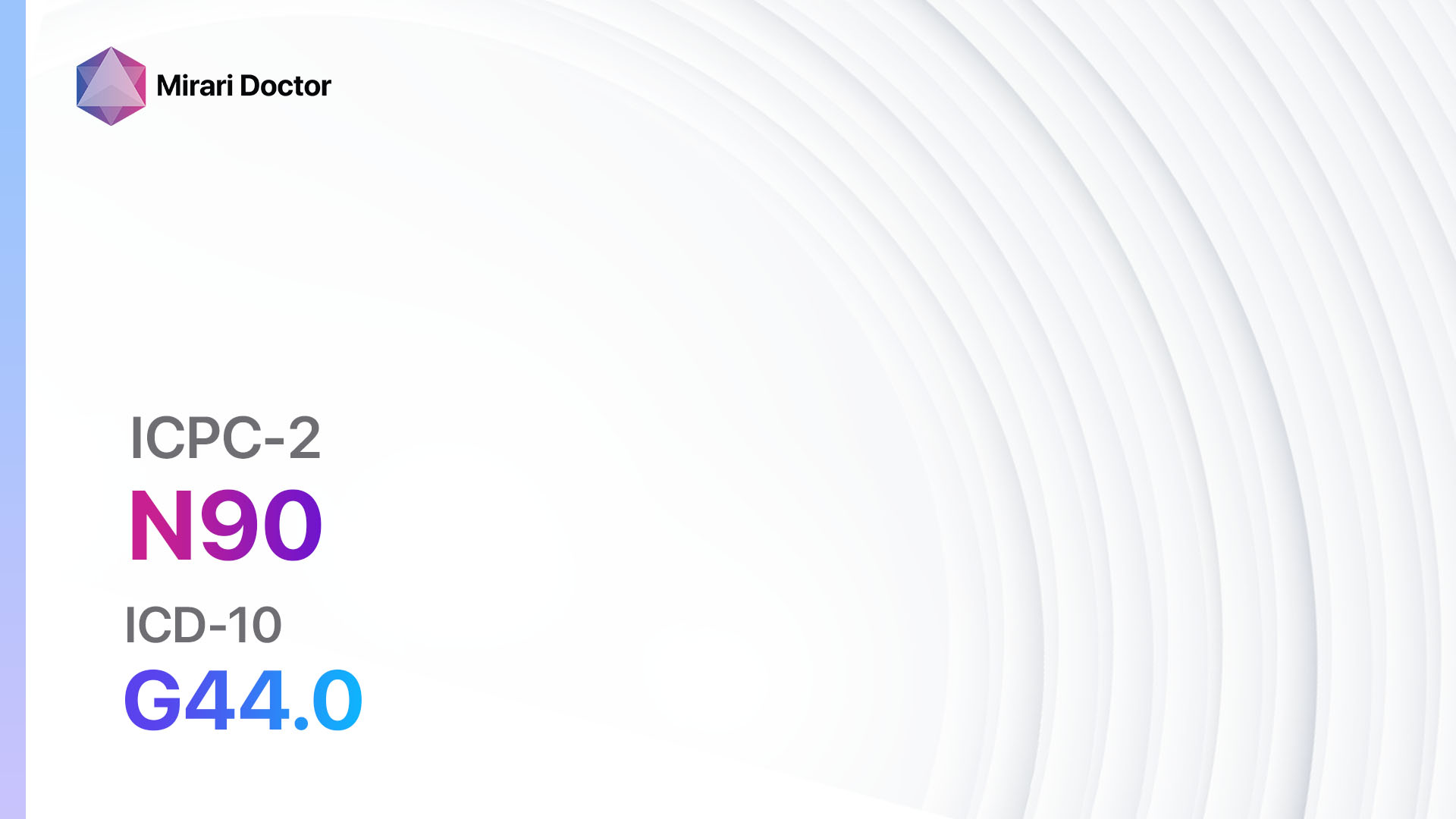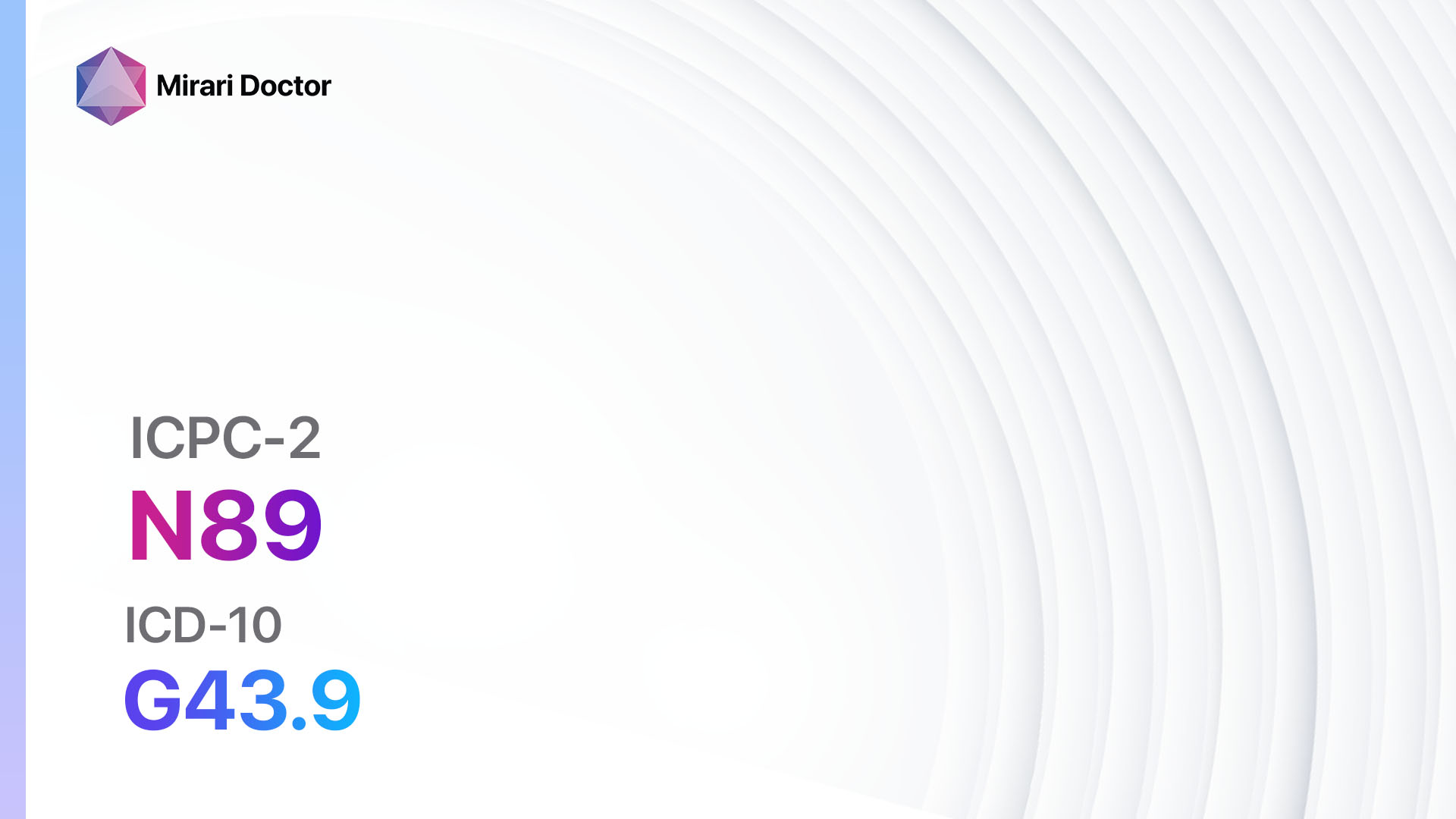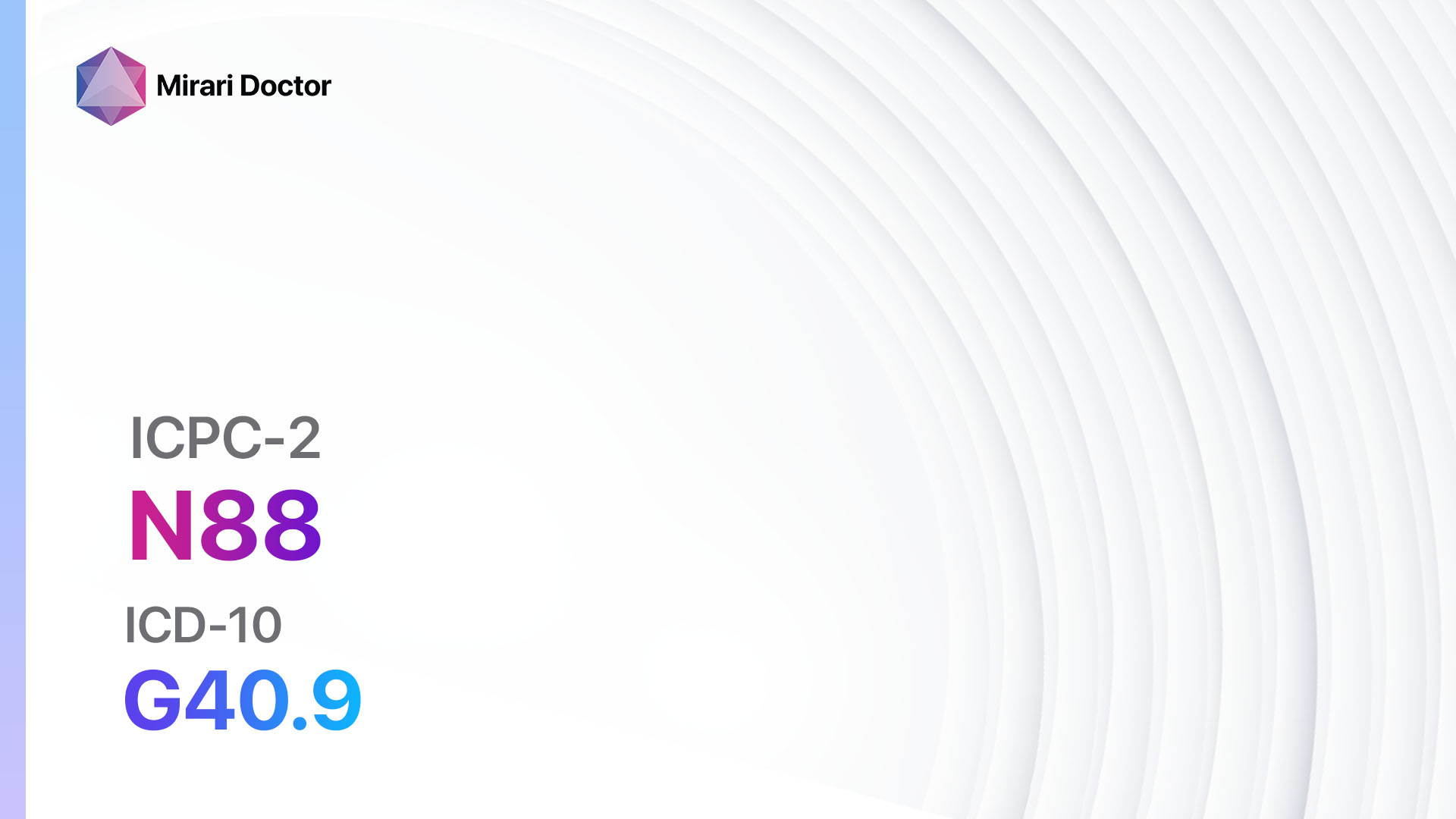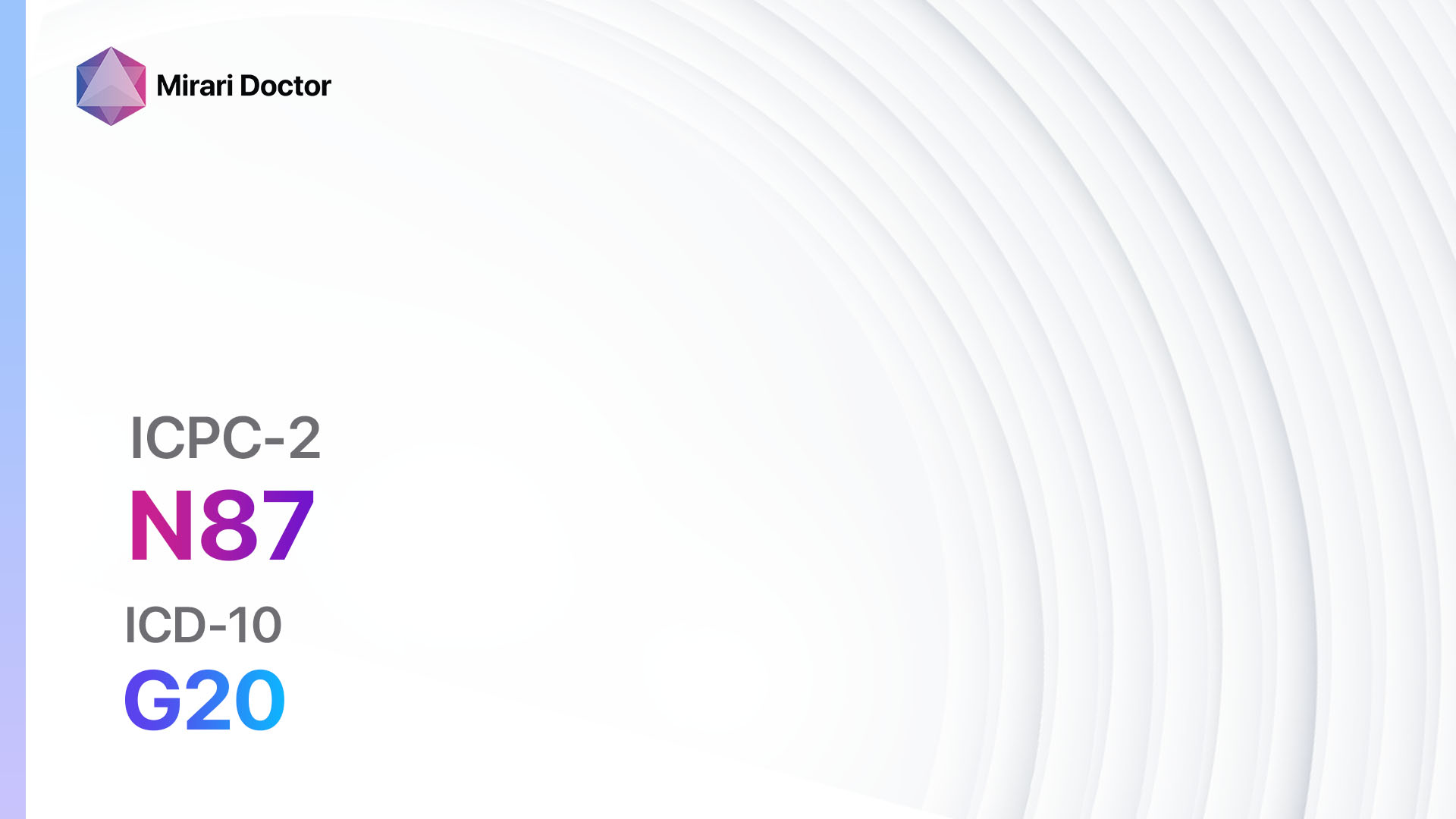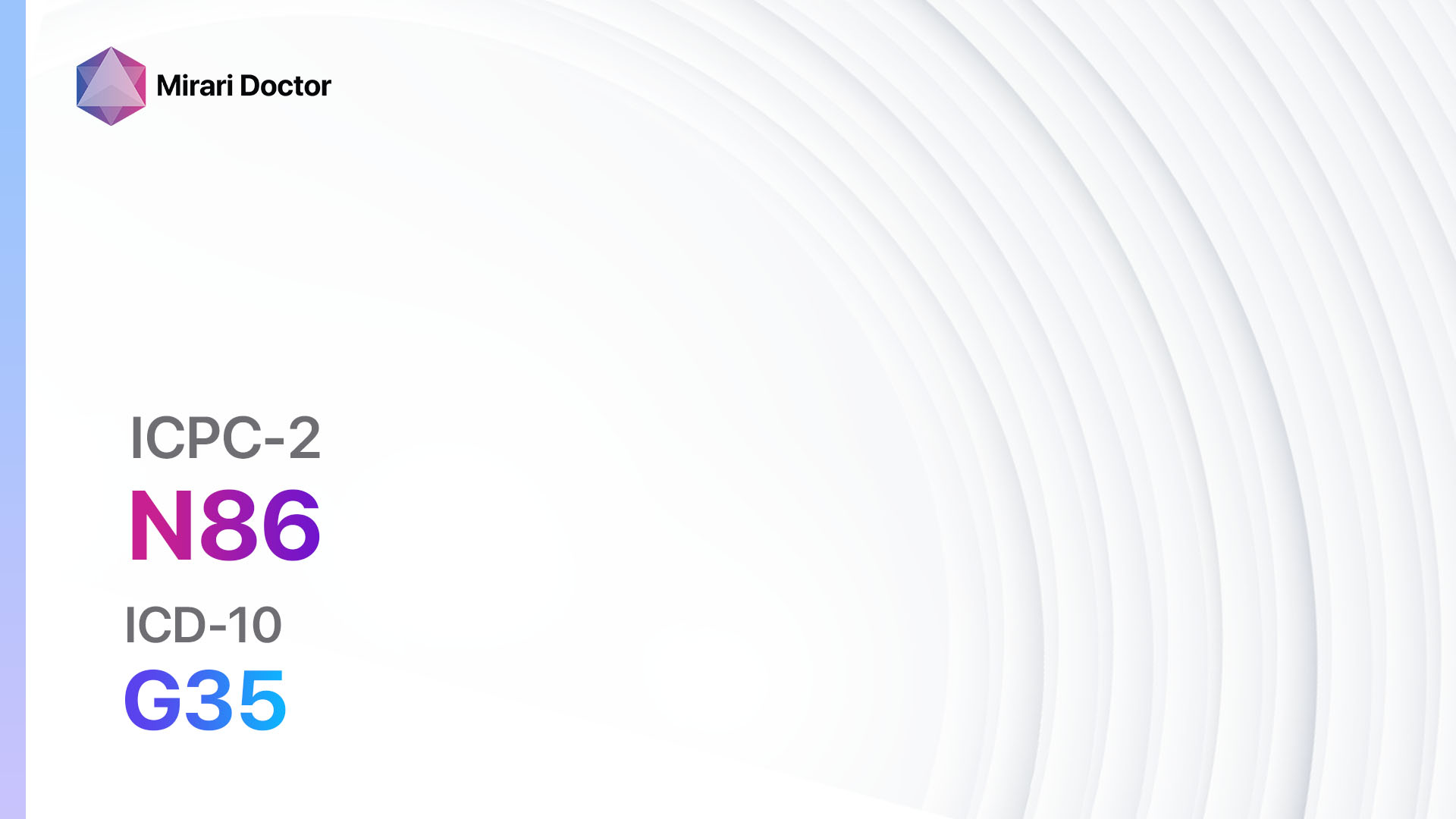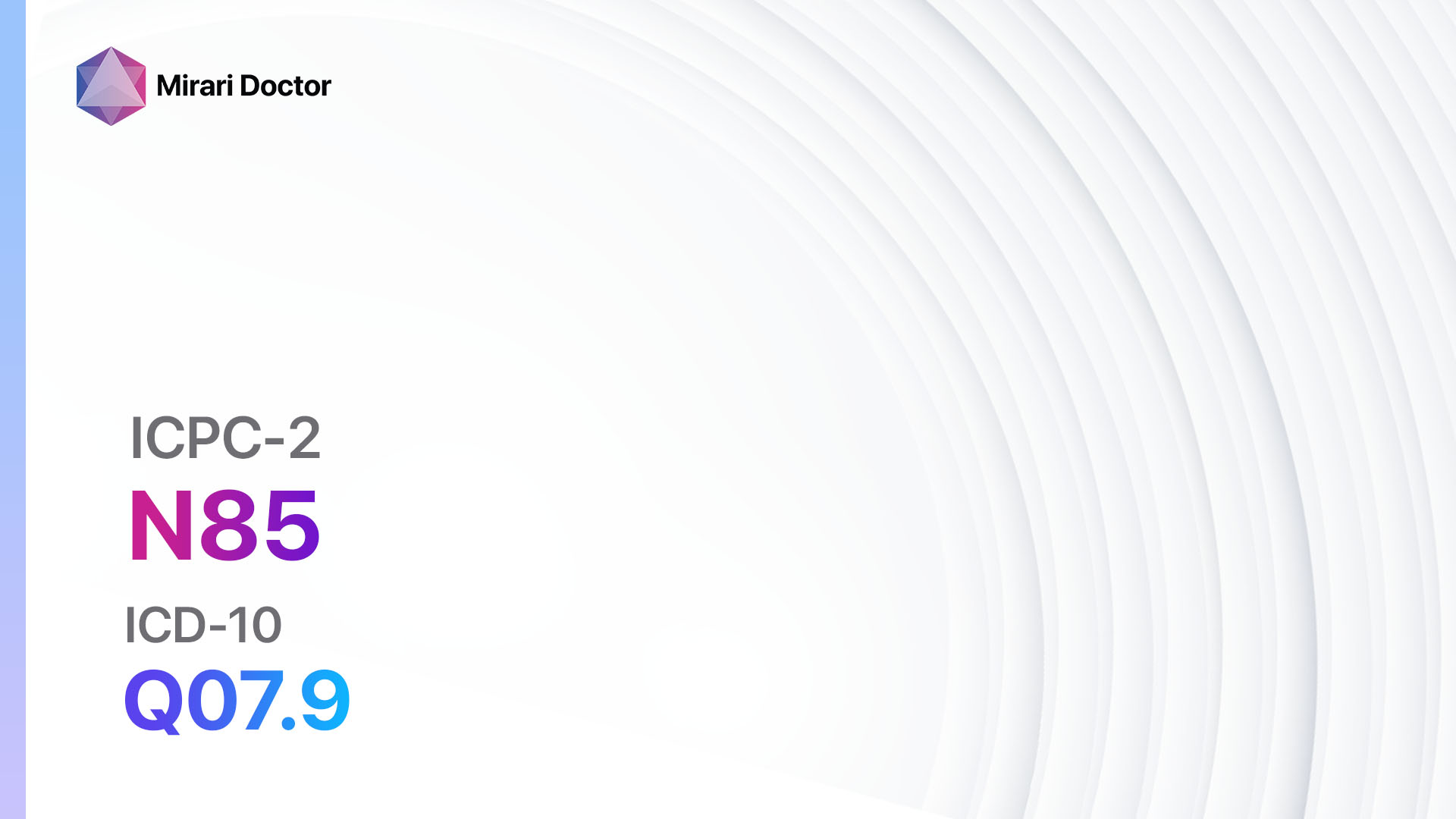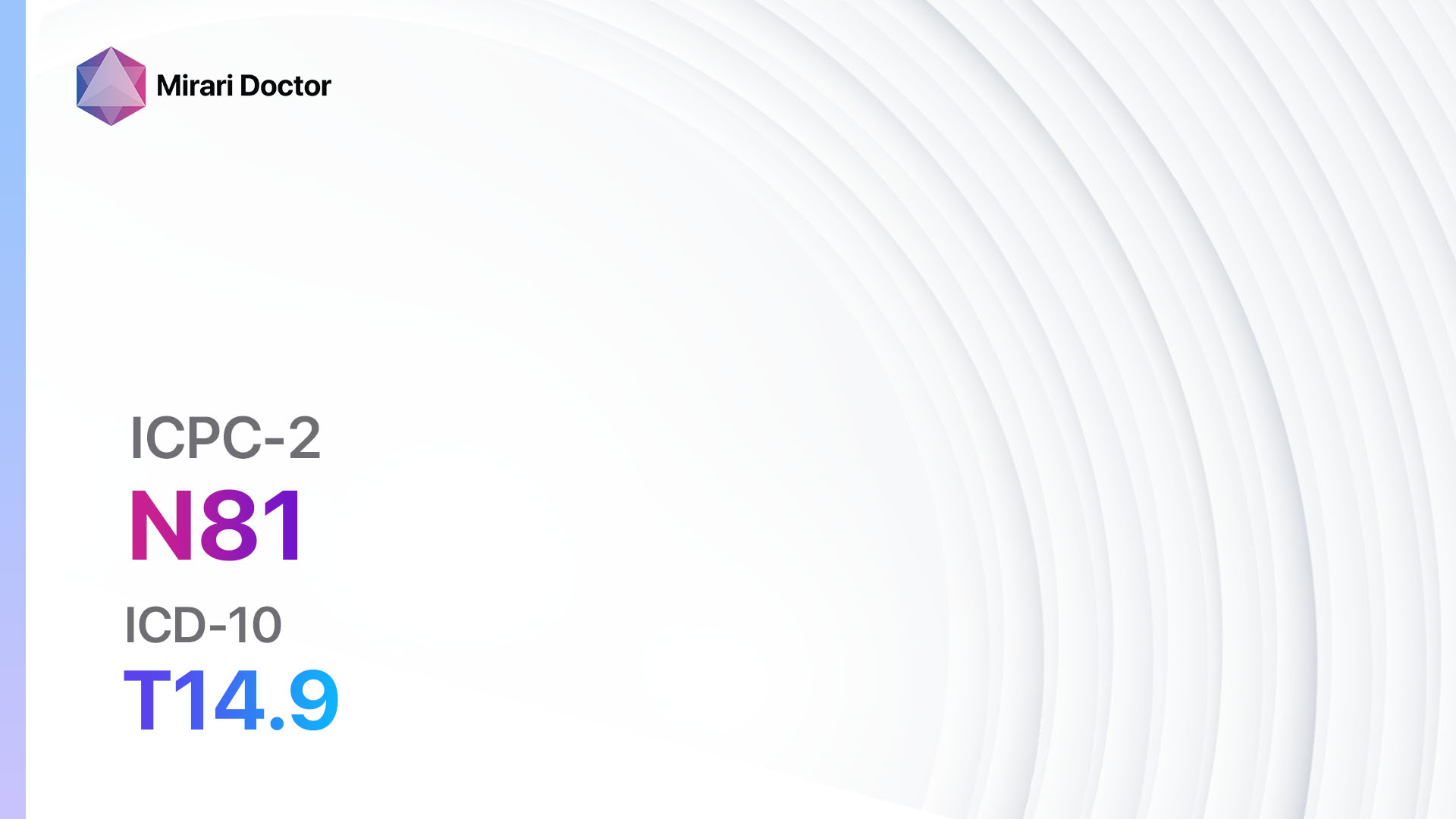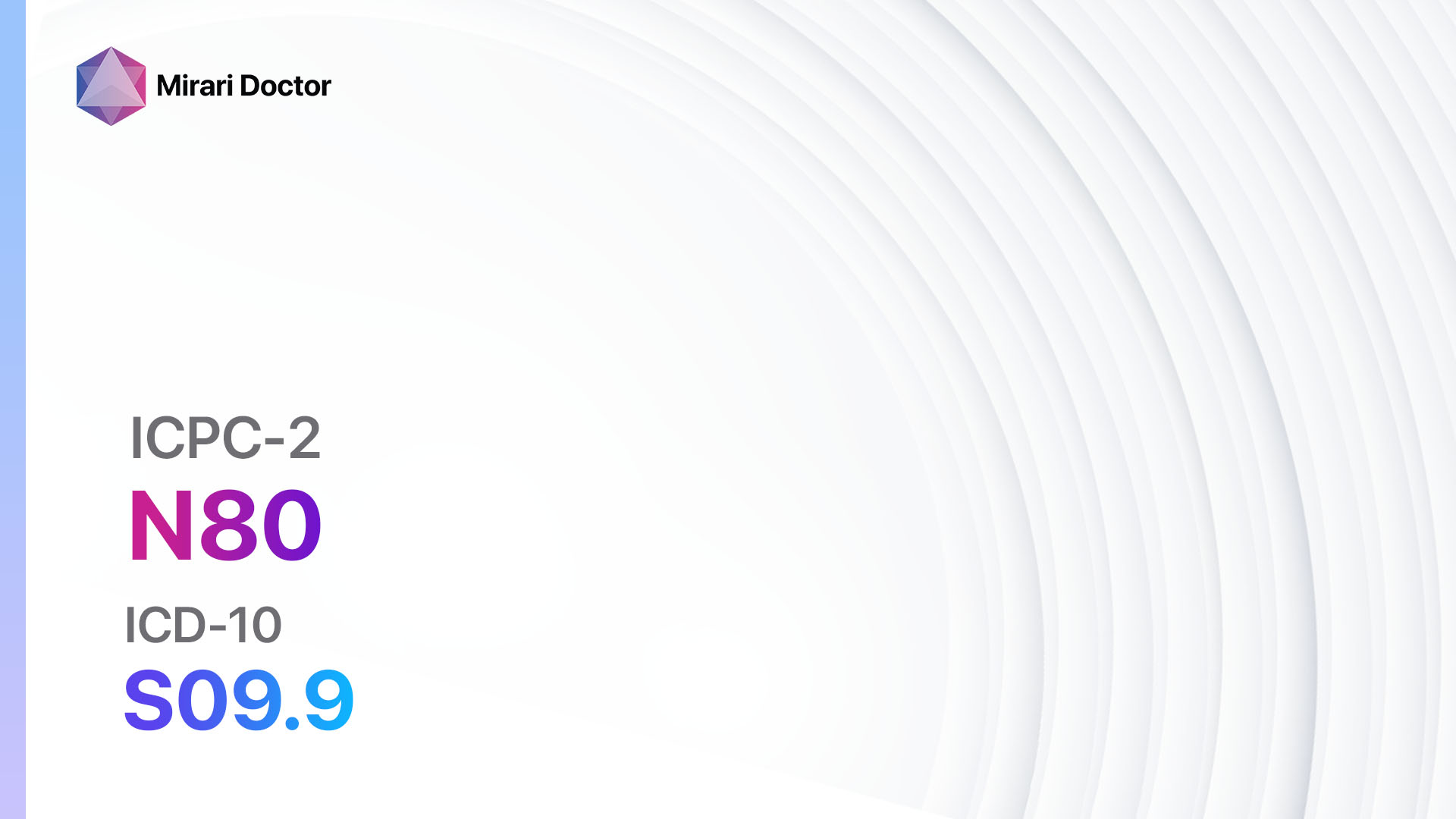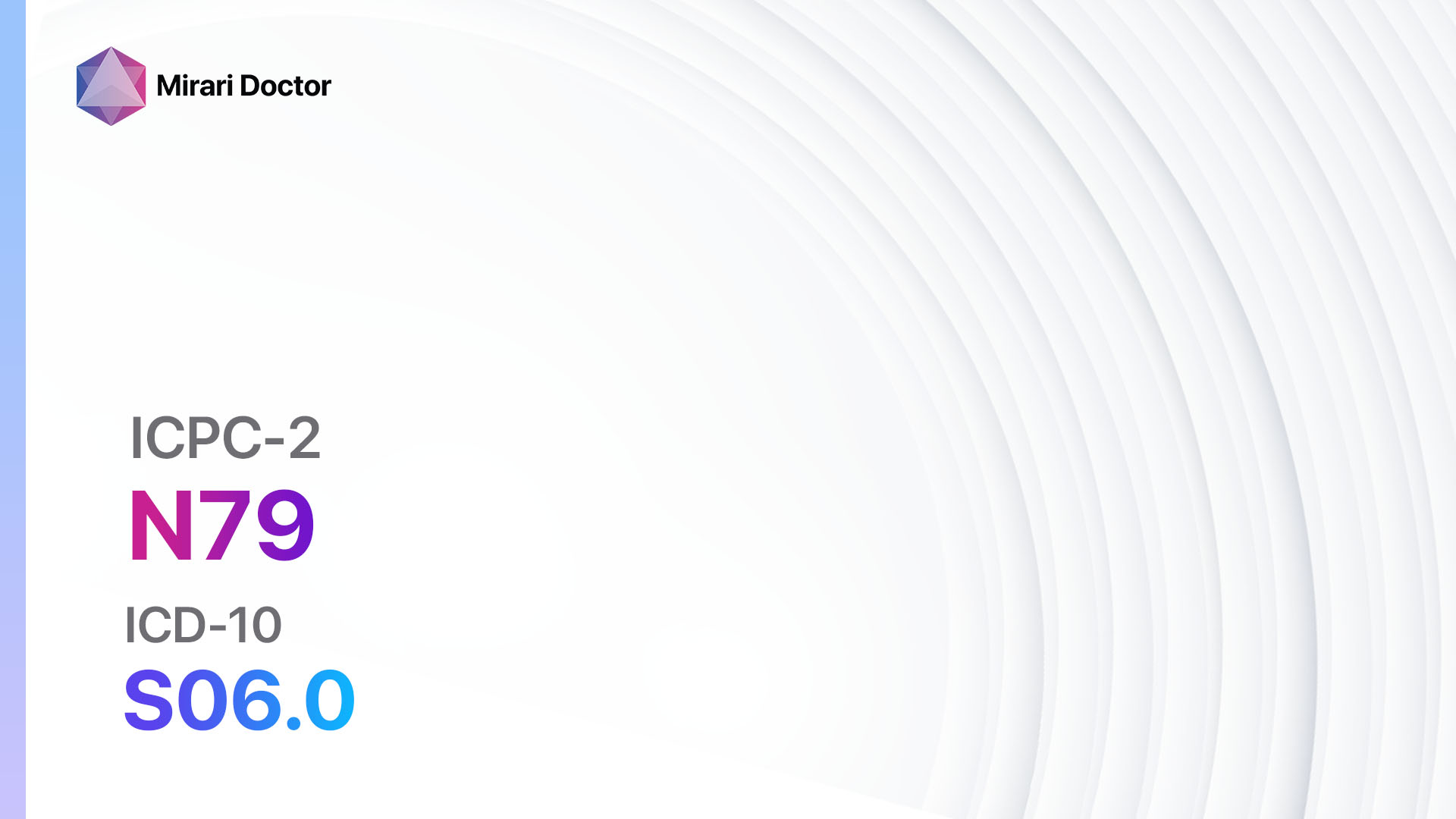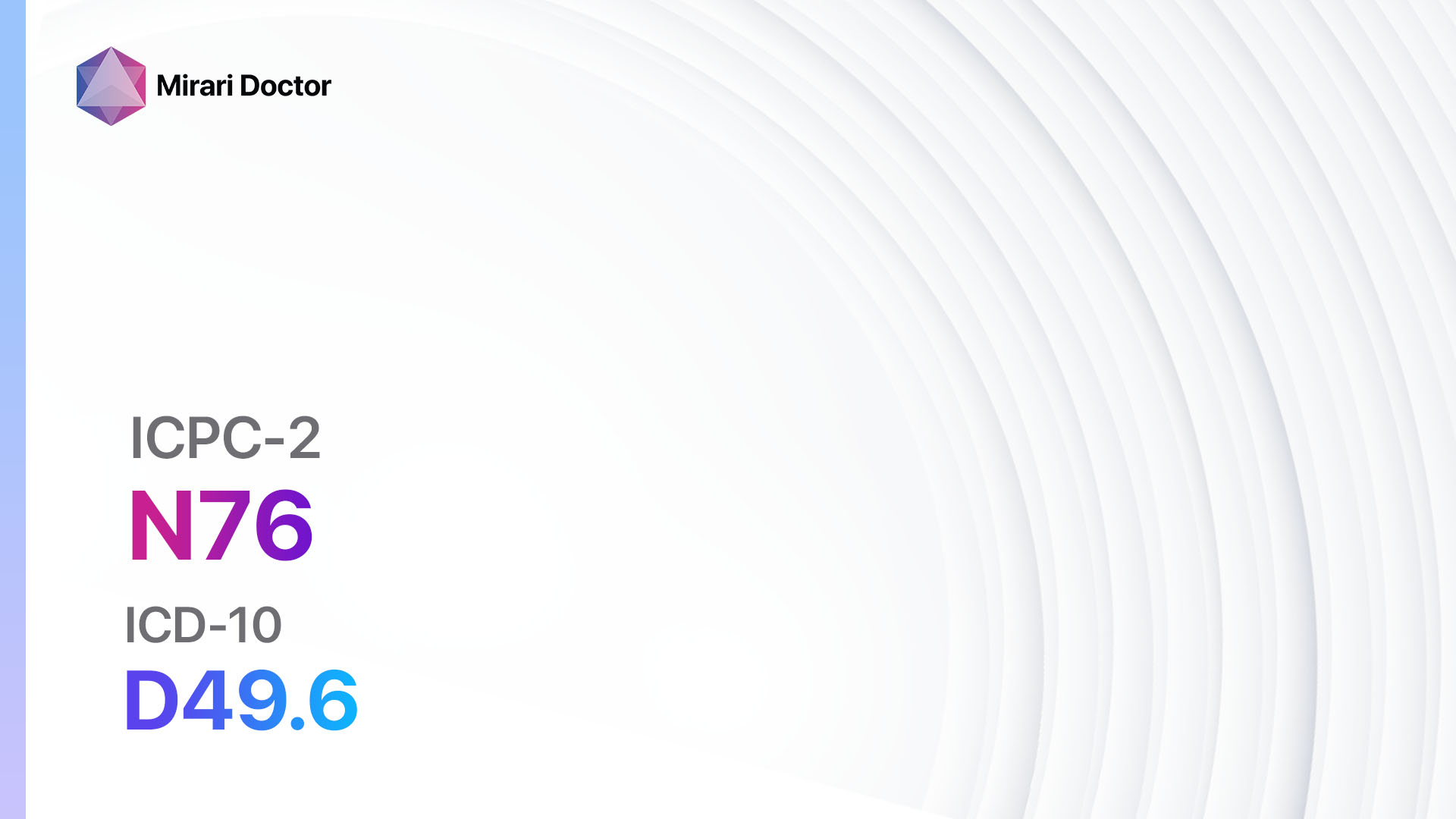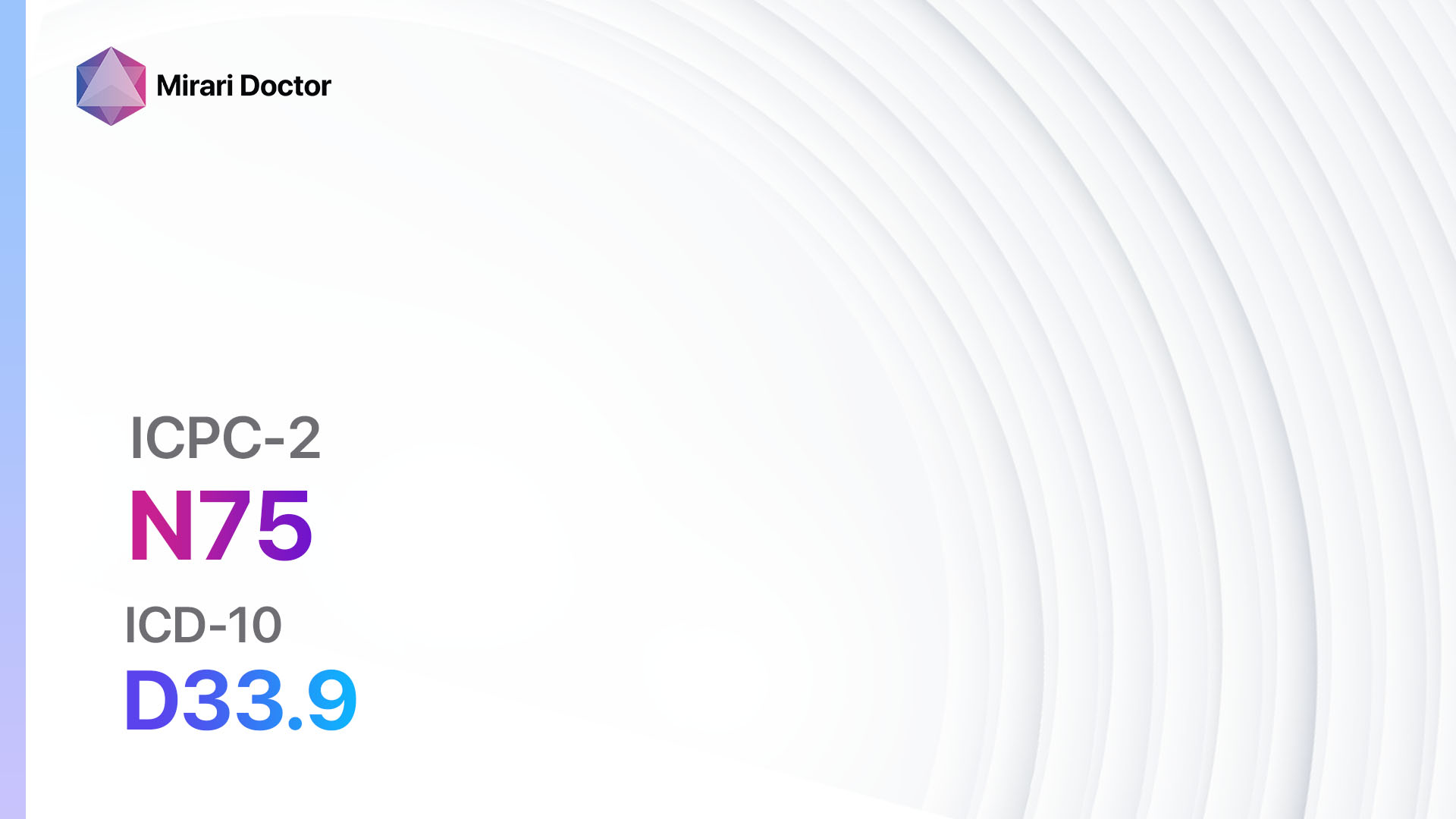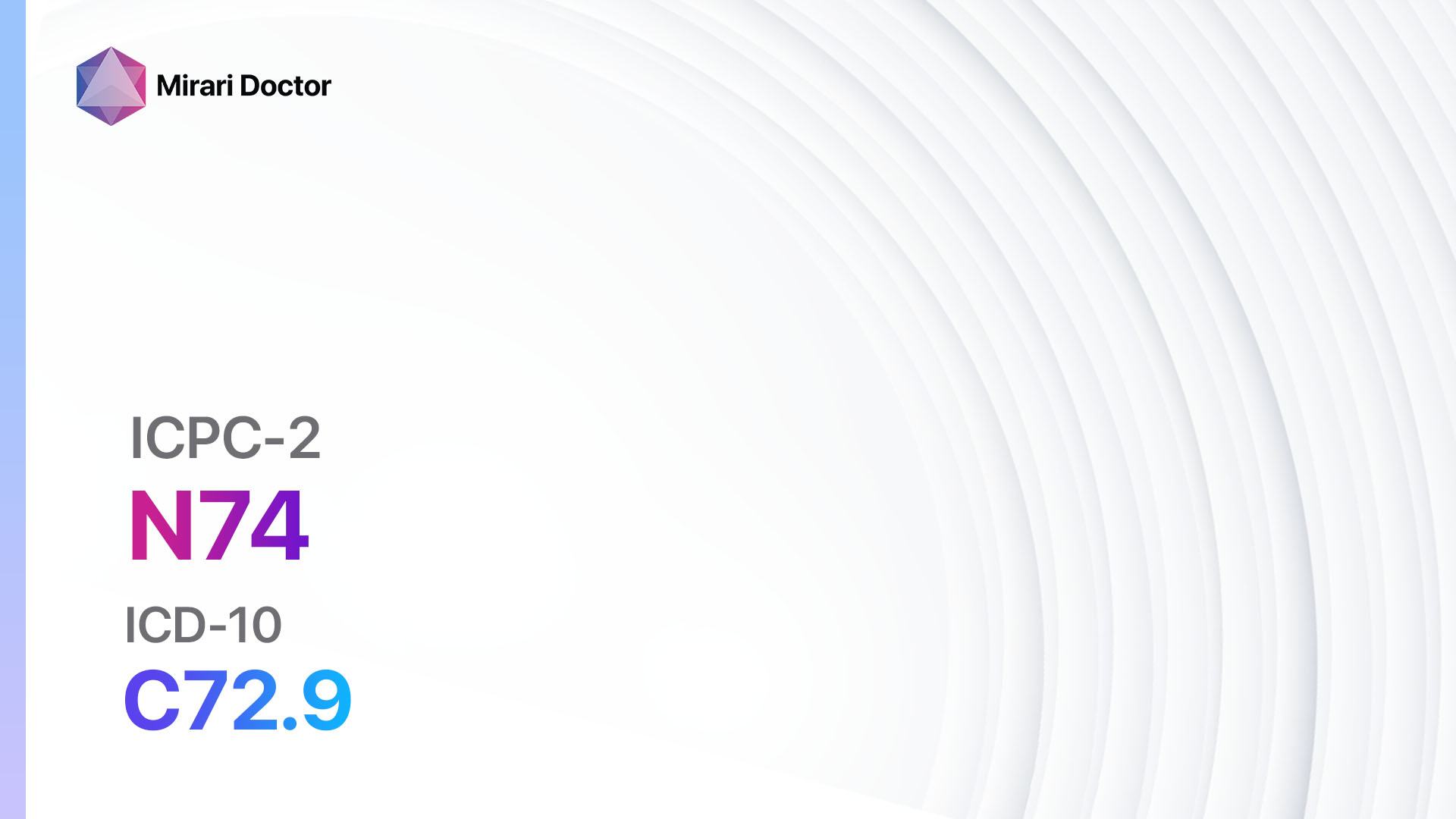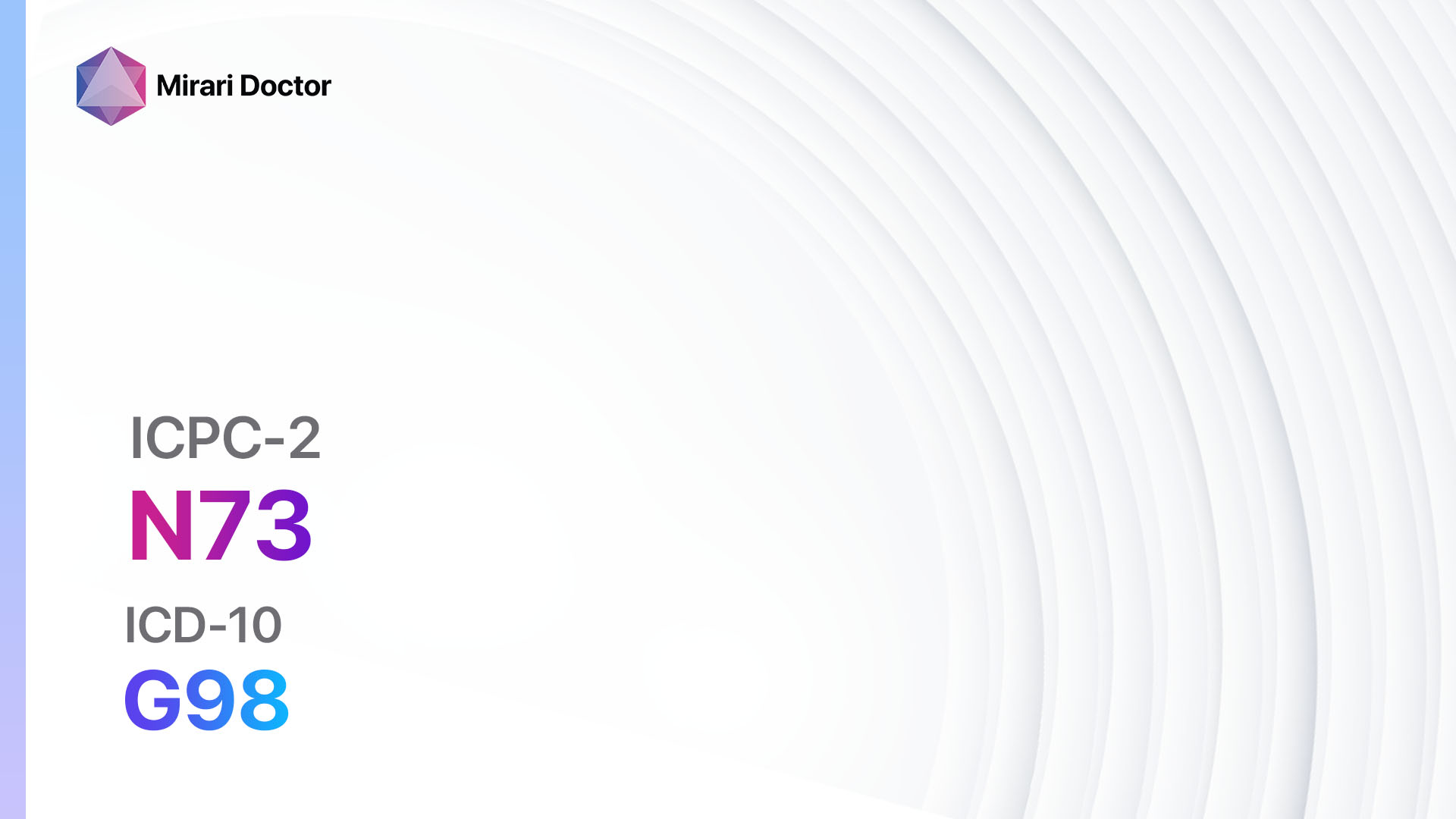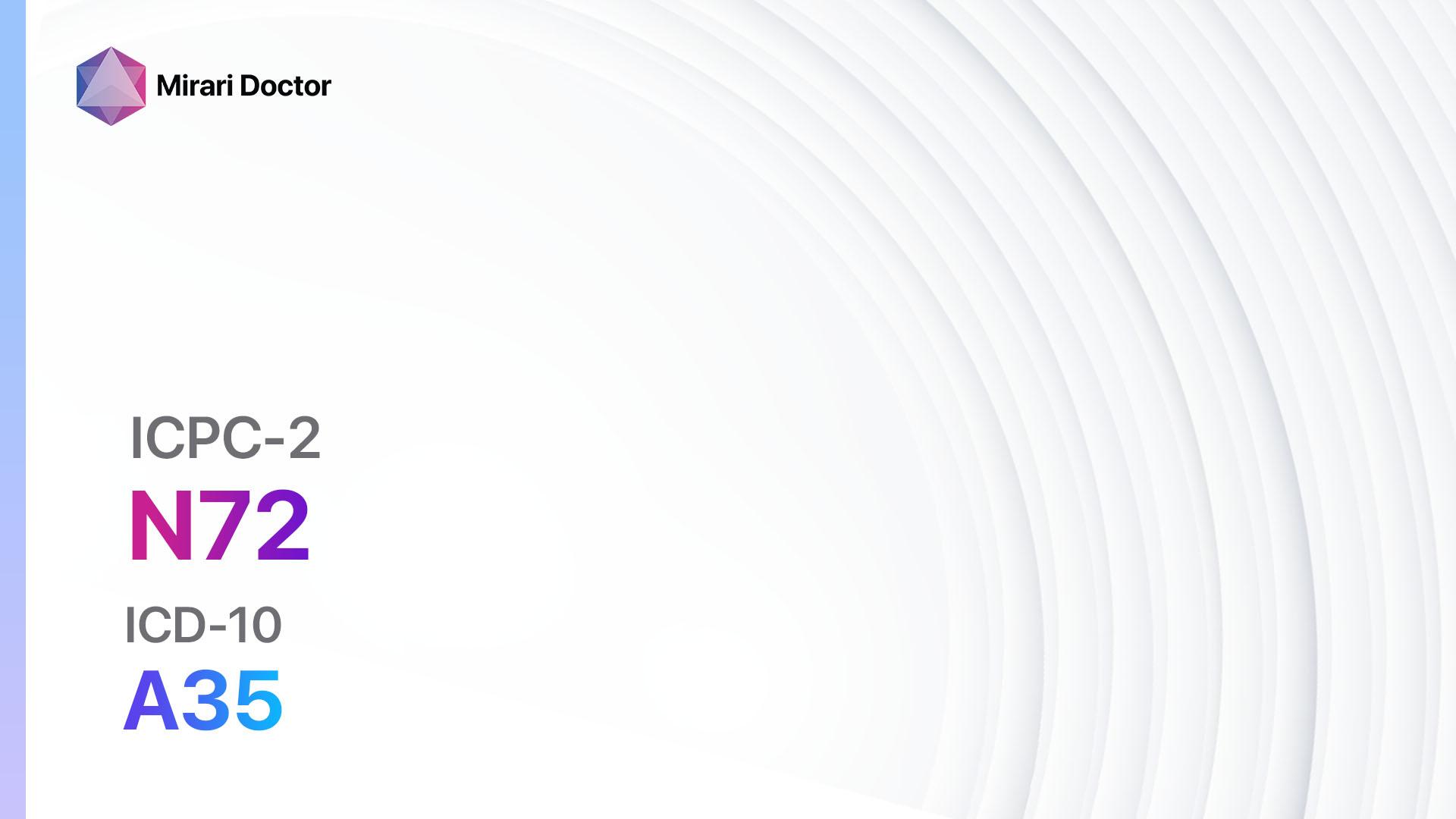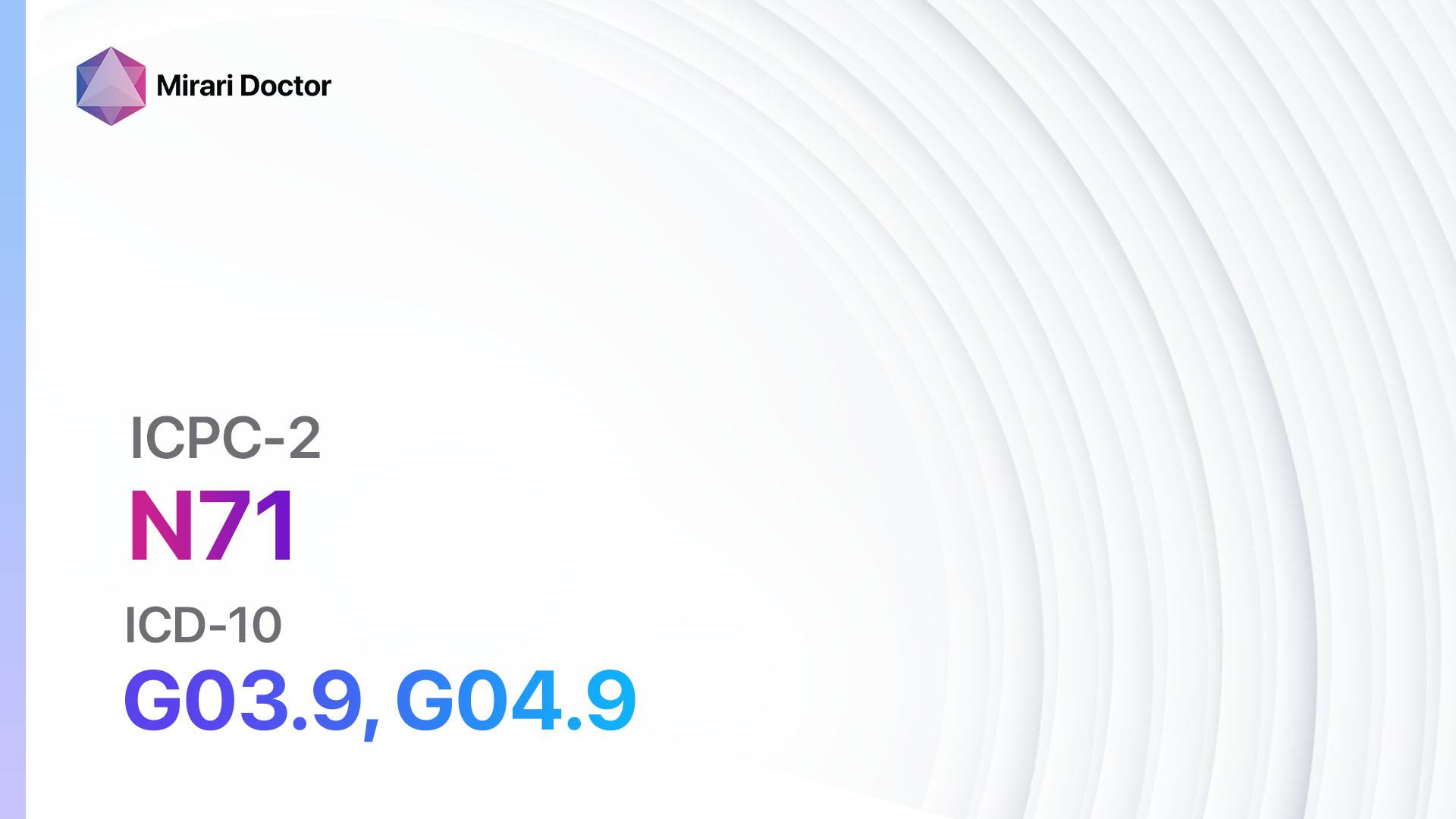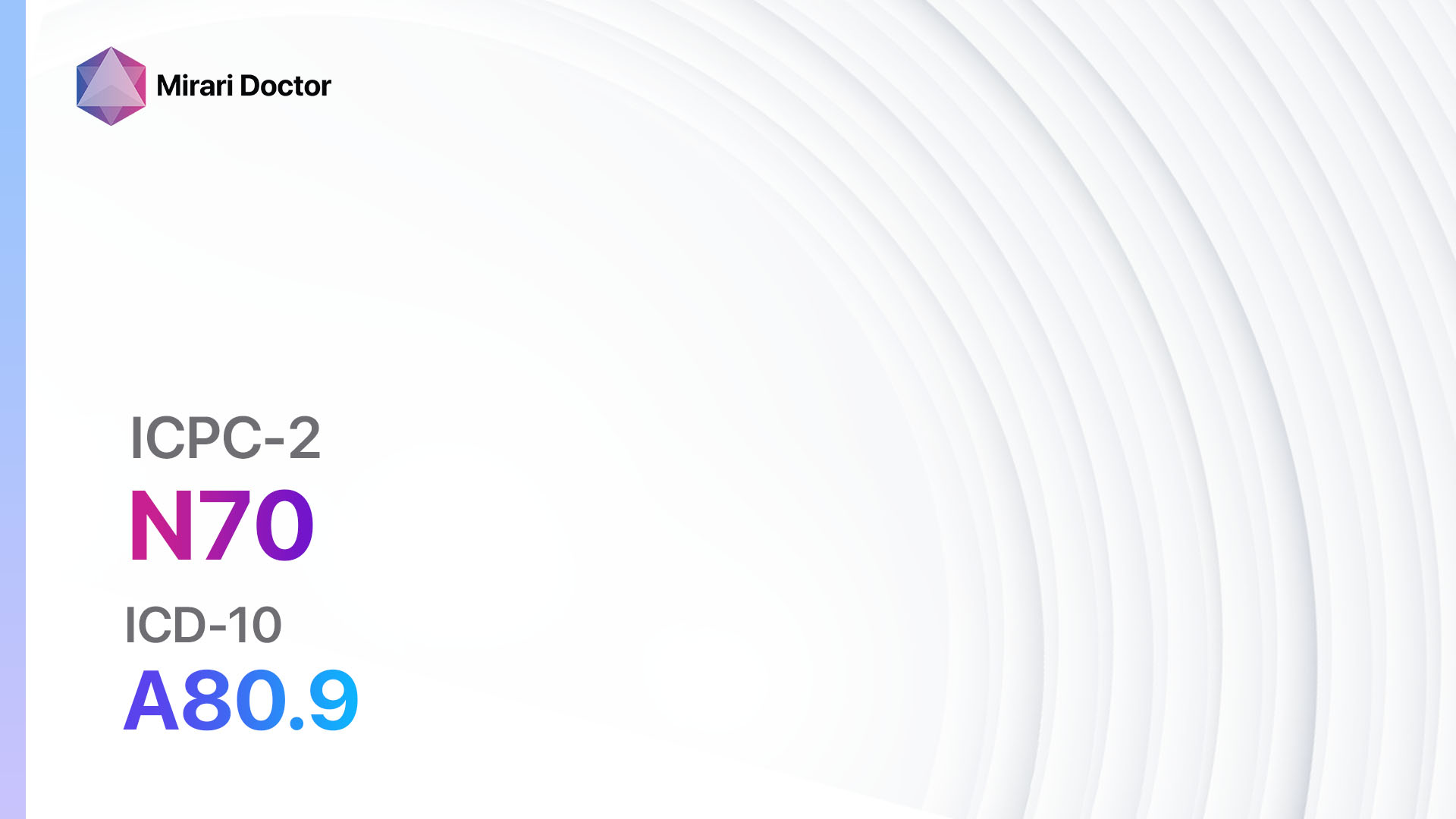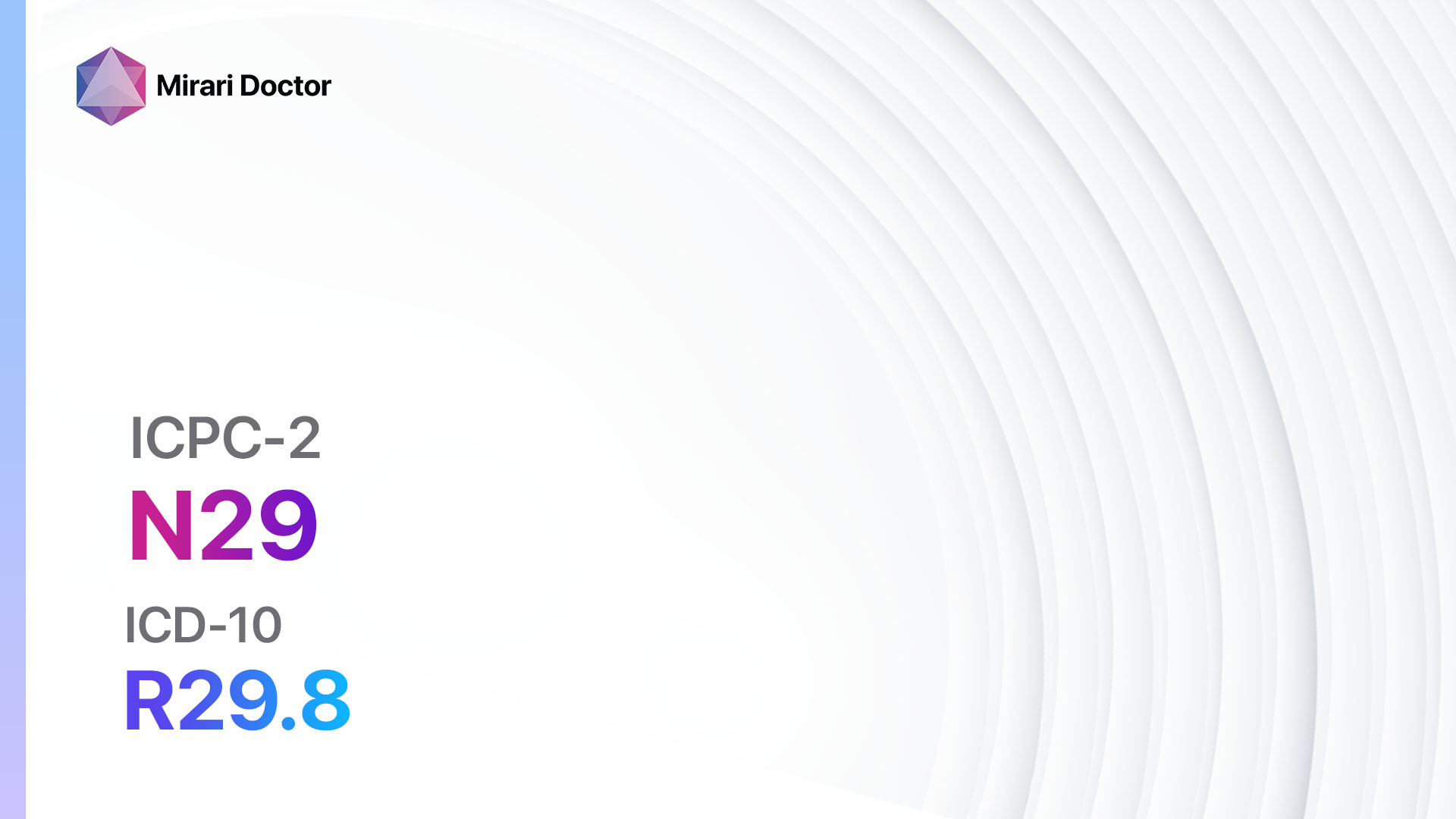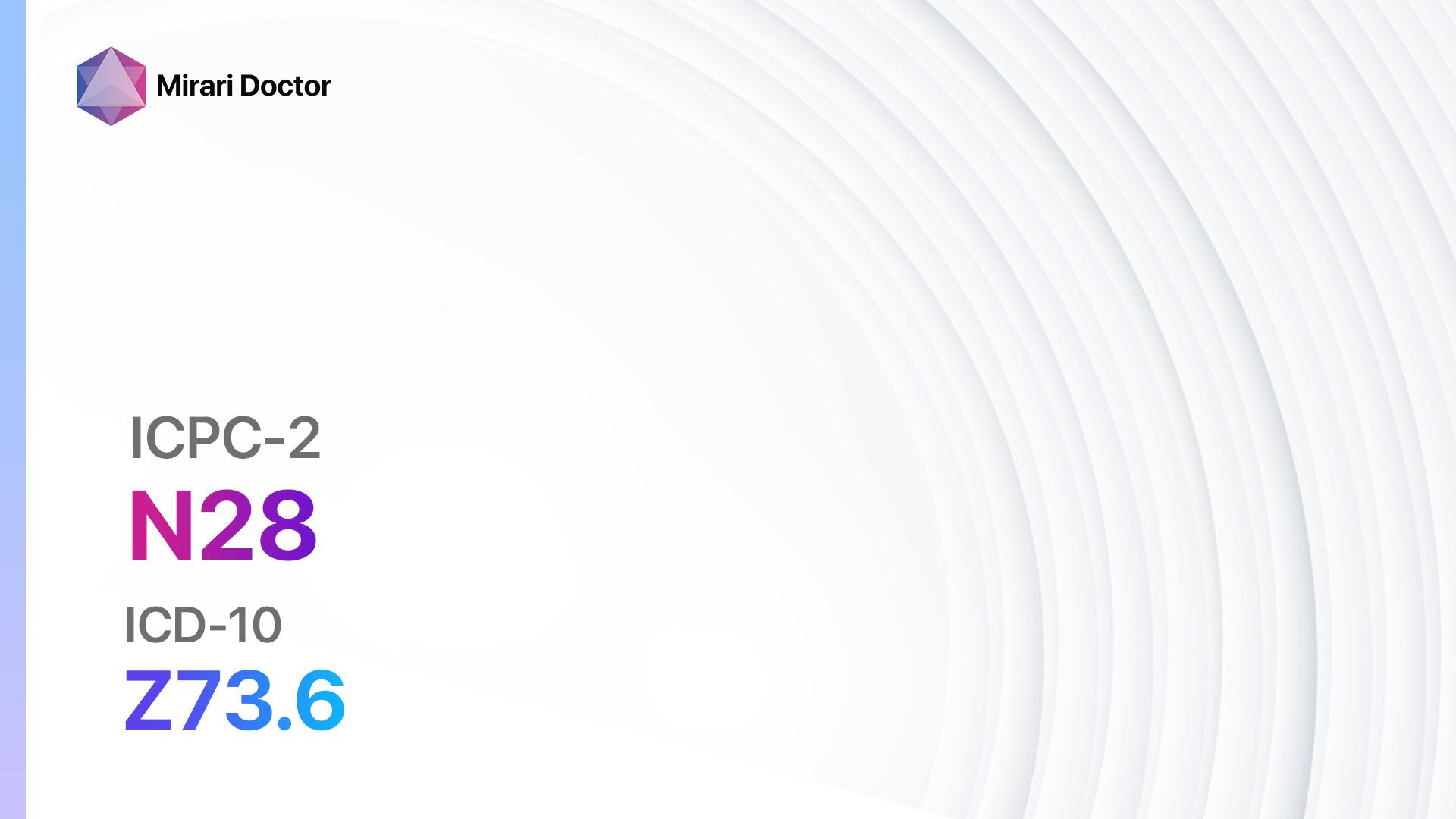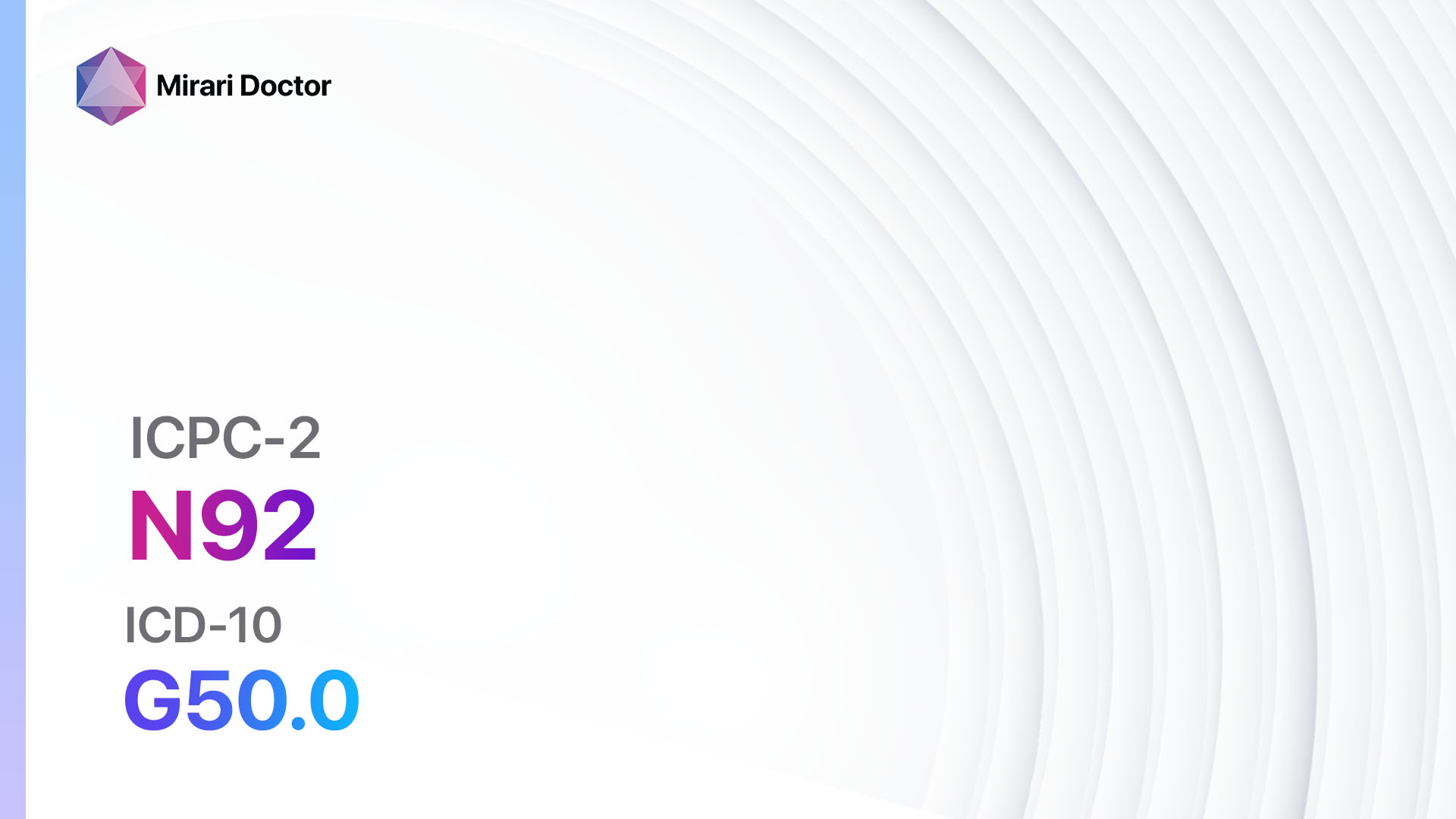
Introduction
Trigeminal neuralgia is a chronic pain condition that affects the trigeminal nerve, which is responsible for transmitting sensations from the face to the brain[1]. It is characterized by sudden, severe facial pain that can be triggered by everyday activities such as eating, talking, or even touching the face[2]. The aim of this guide is to provide healthcare professionals with a comprehensive overview of the diagnosis and management of trigeminal neuralgia.
Codes
Symptoms
- Severe facial pain: Patients may experience sudden, sharp, electric shock-like pain in the face, typically on one side. The pain can be triggered by normal activities such as eating, talking, or brushing the teeth[5].
- Pain attacks: The pain attacks can last from a few seconds to a few minutes and can occur multiple times throughout the day[6].
- Pain-free intervals: Patients may experience periods of remission where they are pain-free for weeks, months, or even years[7].
Causes
- Compression of the trigeminal nerve: The most common cause of trigeminal neuralgia is compression of the trigeminal nerve by a blood vessel, usually an artery, near the base of the brain[8].
- Multiple sclerosis: In some cases, trigeminal neuralgia can be caused by damage to the trigeminal nerve due to multiple sclerosis[9].
Diagnostic Steps
Medical History
- Gather information about the patient’s symptoms, including the location, duration, and triggers of the facial pain.
- Ask about any previous medical conditions or surgeries that may be relevant to the development of trigeminal neuralgia.
- Inquire about any family history of trigeminal neuralgia or other neurological conditions.
Physical Examination
- Perform a thorough examination of the face, paying attention to any signs of sensory abnormalities or muscle weakness.
- Check for any trigger points on the face that may elicit pain during the examination.
- Evaluate the patient’s reflexes, particularly the corneal reflex, which may be diminished in patients with trigeminal neuralgia.
Laboratory Tests
- There are no specific laboratory tests for diagnosing trigeminal neuralgia. However, blood tests may be performed to rule out other potential causes of facial pain, such as infections or autoimmune disorders.
Diagnostic Imaging
- Magnetic Resonance Imaging (MRI): This imaging modality can help identify any structural abnormalities or compression of the trigeminal nerve by blood vessels or tumors[10].
- Computed Tomography (CT) scan: CT scans may be used to visualize the bones and soft tissues of the face and skull, helping to rule out other potential causes of facial pain.
Other Tests
- Electromyography (EMG): EMG may be used to assess the function of the facial muscles and determine if there is any muscle weakness or abnormal nerve conduction.
- Nerve conduction studies: These tests can evaluate the speed and strength of the electrical signals transmitted by the trigeminal nerve.
Follow-up and Patient Education
- Schedule regular follow-up appointments to monitor the patient’s response to treatment and adjust the management plan as needed.
- Provide education to the patient about the nature of trigeminal neuralgia, including the potential triggers and strategies for pain management.
Possible Interventions
Traditional Interventions
Medications:
Top 5 drugs for Trigeminal neuralgia:
- Carbamazepine:
- Cost: $10-$50/month.
- Contraindications: Hypersensitivity to carbamazepine, bone marrow suppression.
- Side effects: Drowsiness, dizziness, nausea.
- Severe side effects: Stevens-Johnson syndrome, toxic epidermal necrolysis.
- Drug interactions: Grapefruit juice, other antiepileptic drugs.
- Warning: Regular monitoring of liver function and blood counts is required.
- Oxcarbazepine:
- Cost: $20-$100/month.
- Contraindications: Hypersensitivity to oxcarbazepine, bone marrow suppression.
- Side effects: Dizziness, drowsiness, nausea.
- Severe side effects: Stevens-Johnson syndrome, toxic epidermal necrolysis.
- Drug interactions: Grapefruit juice, other antiepileptic drugs.
- Warning: Regular monitoring of liver function and blood counts is required.
- Baclofen:
- Cost: $10-$50/month.
- Contraindications: Hypersensitivity to baclofen, history of seizures.
- Side effects: Drowsiness, dizziness, weakness.
- Severe side effects: Hallucinations, seizures.
- Drug interactions: Other medications that cause sedation.
- Warning: Abrupt discontinuation may result in withdrawal symptoms.
- Gabapentin:
- Cost: $10-$50/month.
- Contraindications: Hypersensitivity to gabapentin.
- Side effects: Dizziness, drowsiness, peripheral edema.
- Severe side effects: Stevens-Johnson syndrome, angioedema.
- Drug interactions: Antacids, morphine.
- Warning: May cause suicidal thoughts or behavior.
- Pregabalin:
- Cost: $10-$50/month.
- Contraindications: Hypersensitivity to pregabalin.
- Side effects: Dizziness, drowsiness, weight gain.
- Severe side effects: Angioedema, rhabdomyolysis.
- Drug interactions: Opioids, benzodiazepines.
- Warning: May cause suicidal thoughts or behavior.
Alternative Drugs:
- Tricyclic antidepressants (e.g., Amitriptyline): Can be used as an alternative for pain management in patients who do not respond to or cannot tolerate the traditional medications.
- Botox injections: Injections of botulinum toxin into the affected facial muscles may help relieve pain by blocking the release of certain neurotransmitters. Cost: $500-$1500 per treatment.
- Anticonvulsant medications: Other anticonvulsant medications such as lamotrigine or phenytoin may be considered as alternative options for pain management.
Surgical Procedures:
- Microvascular decompression: This surgical procedure involves moving blood vessels that are compressing the trigeminal nerve away from the nerve, relieving the pressure and reducing pain. Cost: $10,000-$50,000.
- Gamma Knife radiosurgery: This non-invasive procedure uses highly focused radiation to target and damage the trigeminal nerve, reducing pain signals. Cost: $20,000-$50,000.
- Percutaneous radiofrequency rhizotomy: In this procedure, a needle is inserted into the trigeminal nerve and radiofrequency energy is used to damage the nerve fibers, reducing pain. Cost: $5,000-$10,000.
Alternative Interventions
- Acupuncture: May help reduce pain and improve overall well-being. Cost: $60-$120 per session.
- Chiropractic care: Spinal adjustments and manipulations may help alleviate pain and improve nerve function. Cost: $50-$200 per session.
- Transcutaneous electrical nerve stimulation (TENS): This therapy involves the use of low-voltage electrical currents to stimulate the nerves and reduce pain. Cost: $50-$100 for a TENS unit.
- Mind-body techniques: Practices such as meditation, yoga, and relaxation exercises may help manage pain and improve quality of life. Cost: Varies depending on the specific program or class.
- Herbal supplements: Some herbal supplements, such as St. John’s wort or valerian root, may have potential benefits for pain management. Cost: Varies depending on the specific supplement.
Lifestyle Interventions
- Stress management: Stress can exacerbate pain symptoms, so stress reduction techniques such as mindfulness, deep breathing exercises, or engaging in hobbies can be beneficial. Cost: Varies depending on the specific technique or activity.
- Dietary modifications: Avoiding trigger foods or beverages, such as caffeine or spicy foods, may help reduce the frequency or severity of pain attacks. Cost: Varies depending on individual dietary preferences.
- Regular exercise: Engaging in regular physical activity can help improve overall health and well-being, potentially reducing pain symptoms. Cost: Varies depending on the specific exercise routine or gym membership.
- Heat or cold therapy: Applying heat or cold packs to the affected area may help alleviate pain and provide temporary relief. Cost: Varies depending on the specific heat or cold therapy product.
It is important to note that the cost ranges provided are approximate and may vary depending on the location and availability of the interventions.
Mirari Cold Plasma Alternative Intervention
Understanding Mirari Cold Plasma
- Safe and Non-Invasive Treatment: Mirari Cold Plasma is a safe and non-invasive treatment option for various skin conditions. It does not require incisions, minimizing the risk of scarring, bleeding, or tissue damage.
- Efficient Extraction of Foreign Bodies: Mirari Cold Plasma facilitates the removal of foreign bodies from the skin by degrading and dissociating organic matter, allowing easier access and extraction.
- Pain Reduction and Comfort: Mirari Cold Plasma has a local analgesic effect, providing pain relief during the treatment, making it more comfortable for the patient.
- Reduced Risk of Infection: Mirari Cold Plasma has antimicrobial properties, effectively killing bacteria and reducing the risk of infection.
- Accelerated Healing and Minimal Scarring: Mirari Cold Plasma stimulates wound healing and tissue regeneration, reducing healing time and minimizing the formation of scars.
Mirari Cold Plasma Prescription
Video instructions for using Mirari Cold Plasma Device – N92 Trigeminal neuralgia (ICD-10:G50.0)
| Mild | Moderate | Severe |
| Mode setting: 2 (Wound Healing) Location: 7 (Neuro system & ENT) Morning: 15 minutes, Evening: 15 minutes |
Mode setting: 2 (Wound Healing) Location: 7 (Neuro system & ENT) Morning: 30 minutes, Lunch: 30 minutes, Evening: 30 minutes |
Mode setting: 2 (Wound Healing) Location: 7 (Neuro system & ENT) Morning: 30 minutes, Lunch: 30 minutes, Evening: 30 minutes |
| Mode setting: 7 (Immunotherapy) Location: 1 (Sacrum) Morning: 15 minutes, Evening: 15 minutes |
Mode setting: 7 (Immunotherapy) Location: 1 (Sacrum) Morning: 30 minutes, Lunch: 30 minutes, Evening: 30 minutes |
Mode setting: 7 (Immunotherapy) Location: 1 (Sacrum) Morning: 30 minutes, Lunch: 30 minutes, Evening: 30 minutes |
| Mode setting: 7 (Immunotherapy) Location: 7 (Neuro system & ENT) Morning: 15 minutes, Evening: 15 minutes |
Mode setting: 7 (Immunotherapy) Location: 7 (Neuro system & ENT) Morning: 30 minutes, Lunch: 30 minutes, Evening: 30 minutes |
Mode setting: 7 (Immunotherapy) Location: 7 (Neuro system & ENT) Morning: 30 minutes, Lunch: 30 minutes, Evening: 30 minutes |
| Total Morning: 45 minutes approx. $7.50 USD, Evening: 45 minutes approx. $7.50 USD |
Total Morning: 90 minutes approx. $15 USD, Lunch: 90 minutes approx. $15 USD, Evening: 90 minutes approx. $15 USD |
Total Morning: 90 minutes approx. $15 USD, Lunch: 90 minutes approx. $15 USD, Evening: 90 minutes approx. $15 USD |
| Usual treatment for 7-60 days approx. $105 USD – $900 USD | Usual treatment for 6-8 weeks approx. $1,890 USD – $2,520 USD |
Usual treatment for 3-6 months approx. $4,050 USD – $8,100 USD
|
 |
|
Use the Mirari Cold Plasma device to treat Trigeminal neuralgia effectively.
WARNING: MIRARI COLD PLASMA IS DESIGNED FOR THE HUMAN BODY WITHOUT ANY ARTIFICIAL OR THIRD PARTY PRODUCTS. USE OF OTHER PRODUCTS IN COMBINATION WITH MIRARI COLD PLASMA MAY CAUSE UNPREDICTABLE EFFECTS, HARM OR INJURY. PLEASE CONSULT A MEDICAL PROFESSIONAL BEFORE COMBINING ANY OTHER PRODUCTS WITH USE OF MIRARI.
Step 1: Cleanse the Skin
- Start by cleaning the affected area of the skin with a gentle cleanser or mild soap and water. Gently pat the area dry with a clean towel.
Step 2: Prepare the Mirari Cold Plasma device
- Ensure that the Mirari Cold Plasma device is fully charged or has fresh batteries as per the manufacturer’s instructions. Make sure the device is clean and in good working condition.
- Switch on the Mirari device using the power button or by following the specific instructions provided with the device.
- Some Mirari devices may have adjustable settings for intensity or treatment duration. Follow the manufacturer’s instructions to select the appropriate settings based on your needs and the recommended guidelines.
Step 3: Apply the Device
- Place the Mirari device in direct contact with the affected area of the skin. Gently glide or hold the device over the skin surface, ensuring even coverage of the area experiencing.
- Slowly move the Mirari device in a circular motion or follow a specific pattern as indicated in the user manual. This helps ensure thorough treatment coverage.
Step 4: Monitor and Assess:
- Keep track of your progress and evaluate the effectiveness of the Mirari device in managing your Trigeminal neuralgia. If you have any concerns or notice any adverse reactions, consult with your health care professional.
Note
This guide is for informational purposes only and should not replace the advice of a medical professional. Always consult with your healthcare provider or a qualified medical professional for personal advice, diagnosis, or treatment. Do not solely rely on the information presented here for decisions about your health. Use of this information is at your own risk. The authors of this guide, nor any associated entities or platforms, are not responsible for any potential adverse effects or outcomes based on the content.
Mirari Cold Plasma System Disclaimer
- Purpose: The Mirari Cold Plasma System is a Class 2 medical device designed for use by trained healthcare professionals. It is registered for use in Thailand and Vietnam. It is not intended for use outside of these locations.
- Informational Use: The content and information provided with the device are for educational and informational purposes only. They are not a substitute for professional medical advice or care.
- Variable Outcomes: While the device is approved for specific uses, individual outcomes can differ. We do not assert or guarantee specific medical outcomes.
- Consultation: Prior to utilizing the device or making decisions based on its content, it is essential to consult with a Certified Mirari Tele-Therapist and your medical healthcare provider regarding specific protocols.
- Liability: By using this device, users are acknowledging and accepting all potential risks. Neither the manufacturer nor the distributor will be held accountable for any adverse reactions, injuries, or damages stemming from its use.
- Geographical Availability: This device has received approval for designated purposes by the Thai and Vietnam FDA. As of now, outside of Thailand and Vietnam, the Mirari Cold Plasma System is not available for purchase or use.
References
- Cruccu G, Finnerup NB, Jensen TS, et al. Trigeminal neuralgia: New classification and diagnostic grading for practice and research. Neurology. 2016;87(2):220-228. doi:10.1212/WNL.0000000000002840
- Maarbjerg S, Di Stefano G, Bendtsen L, Cruccu G. Trigeminal neuralgia – diagnosis and treatment. Cephalalgia. 2017;37(7):648-657. doi:10.1177/0333102416687280
- ICPC-2 – English. World Organization of Family Doctors. https://www.globalfamilydoctor.com/site/DefaultSite/filesystem/documents/Groups/WICC/International%20Classification%20of%20Primary%20Care%20Dec16.pdf
- ICD-10 Version:2019. World Health Organization. https://icd.who.int/browse10/2019/en#/G50.0
- Trigeminal neuralgia – Symptoms and causes. Mayo Clinic. https://www.mayoclinic.org/diseases-conditions/trigeminal-neuralgia/symptoms-causes/syc-20353344
- Trigeminal Neuralgia Fact Sheet. National Institute of Neurological Disorders and Stroke. https://www.ninds.nih.gov/Disorders/Patient-Caregiver-Education/Fact-Sheets/Trigeminal-Neuralgia-Fact-Sheet
- Trigeminal neuralgia. NHS. https://www.nhs.uk/conditions/trigeminal-neuralgia/
- Trigeminal Neuralgia. American Association of Neurological Surgeons. https://www.aans.org/Patients/Neurosurgical-Conditions-and-Treatments/Trigeminal-Neuralgia
- Trigeminal neuralgia. National Organization for Rare Disorders. https://rarediseases.org/rare-diseases/trigeminal-neuralgia/
- Trigeminal Neuralgia – Diagnosis and treatment. Mayo Clinic. https://www.mayoclinic.org/diseases-conditions/trigeminal-neuralgia/diagnosis-treatment/drc-20353347
Related articles
Made in USA


